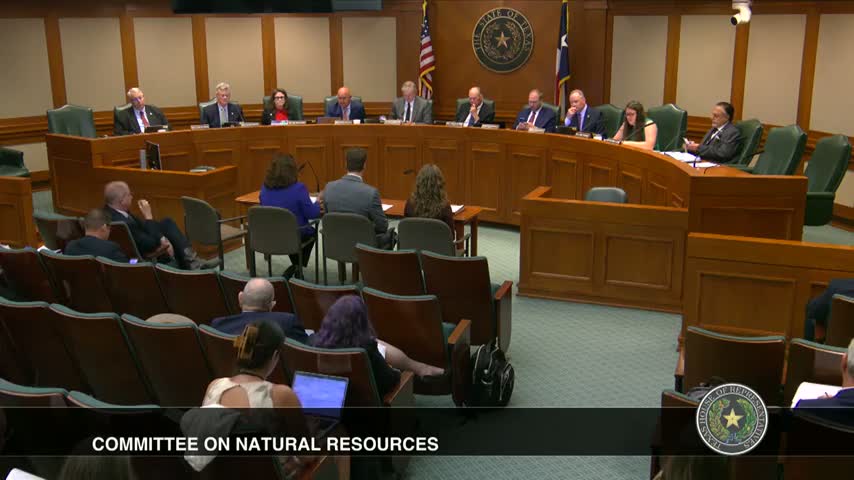Texas leaders push for urgent water reuse funding reforms
September 24, 2024 | Committee on Natural Resources, HOUSE OF REPRESENTATIVES, Legislative, Texas
This article was created by AI summarizing key points discussed. AI makes mistakes, so for full details and context, please refer to the video of the full meeting. Please report any errors so we can fix them. Report an error »

In a recent government meeting, experts emphasized the urgent need for Texas to enhance its water reuse strategies to address growing water challenges. Key testimonies highlighted the necessity for increased funding and dedicated staff at the Texas Commission on Environmental Quality (TCEQ) and the Texas Water Development Board (TWDB) to modernize water reuse data collection and improve engineering capabilities.
Miss Montoya, a representative from a water reuse advocacy group, stressed that without adequate funding, Texas risks falling behind in water reuse initiatives, which are essential for sustainable economic growth. She pointed out that competitive salaries for agency staff and updated training on reuse technologies are critical for the state to regain its leadership in this area.
Chandler Crouch, a civil engineer with Texas Water Trade, discussed the potential of voluntary water transactions and the importance of incentivizing private developers to invest in water reuse systems. He noted that existing financing mechanisms, such as municipal utility districts and tax increment reinvestment zones, could be leveraged to support the integration of water reuse infrastructure in new developments.
Rachel Haynes, policy director at the Greater Edwards Aquifer Alliance, proposed the establishment of water reuse districts, similar to the successful model in San Antonio. She argued that such districts could facilitate the planning and implementation of comprehensive water reuse systems, ultimately reducing reliance on costly new water supplies and protecting local water sources.
The discussions underscored a consensus among stakeholders that proactive measures in water reuse are not only necessary for environmental sustainability but also vital for the economic stability of Texas. As the state faces increasing water scarcity, the implementation of robust water reuse strategies could mitigate future challenges and support continued growth.
Miss Montoya, a representative from a water reuse advocacy group, stressed that without adequate funding, Texas risks falling behind in water reuse initiatives, which are essential for sustainable economic growth. She pointed out that competitive salaries for agency staff and updated training on reuse technologies are critical for the state to regain its leadership in this area.
Chandler Crouch, a civil engineer with Texas Water Trade, discussed the potential of voluntary water transactions and the importance of incentivizing private developers to invest in water reuse systems. He noted that existing financing mechanisms, such as municipal utility districts and tax increment reinvestment zones, could be leveraged to support the integration of water reuse infrastructure in new developments.
Rachel Haynes, policy director at the Greater Edwards Aquifer Alliance, proposed the establishment of water reuse districts, similar to the successful model in San Antonio. She argued that such districts could facilitate the planning and implementation of comprehensive water reuse systems, ultimately reducing reliance on costly new water supplies and protecting local water sources.
The discussions underscored a consensus among stakeholders that proactive measures in water reuse are not only necessary for environmental sustainability but also vital for the economic stability of Texas. As the state faces increasing water scarcity, the implementation of robust water reuse strategies could mitigate future challenges and support continued growth.
View full meeting
This article is based on a recent meeting—watch the full video and explore the complete transcript for deeper insights into the discussion.
View full meeting
